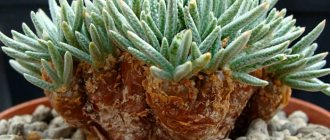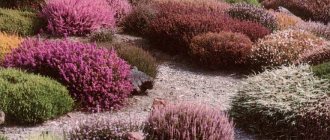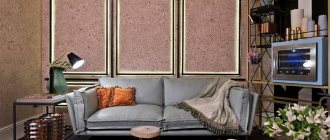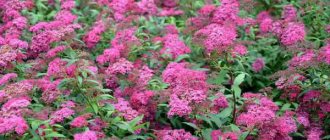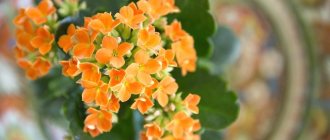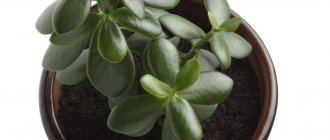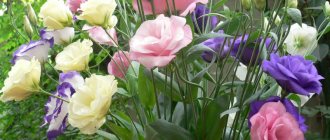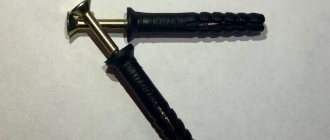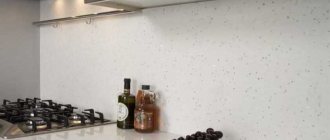[edit] Varieties among different peoples
- Ardzhen
(in Kabarda and Circassia),
khetsyr
(in Adygea) - Adyghe (Circassian) mat[6].
The main material for weaving mats among the Circassians was cattail[7]. Namazlyk
is a mat for performing prayer[8]. - Shym shi
- making patterned mats from chiya, a type of Kazakh folk applied art[9][10]. - Tatami
are mats that are used to cover floors in Japan [11]. - Kushasana
is a mat made from kusha grass, used in Indian tantric sadhanas[12]. - “Yokan”
is a traditional Khanty mat, a dense woven bedding made of marsh grasses (reed, cattail, wheatgrass, reed grass, rush grass) [13]. - Shchibazy
are reed mats among the Central Asian Dungans[14]. - Buyra
- reed mats among the Uzbeks[15]. - Karakalpaks make several types of mats, which are woven differently[16]: Shiy
(from reed woven with twine) is used to cover the outside walls of the yurt - Boira
- a woven mat made from split reed stems - Shypta
is made from soft stems of zheken (cattail). Boyra and shipta are used as bedding on the floor of the yurt and in houses.
Jute mats
This herbaceous plant is found only in India. It is made from:
- leg-split;
- burlap;
- basketry.
Jute fibers are distinguished by their softness and smoothness. Therefore, if you need to create a soft floor covering, mats are considered an ideal option.
The softest are products in which jute and chenille fibers were combined.
Excellent texture and heterogeneous natural color make stains on such a product almost invisible. But the chenille mat is not very durable, so it is better to use it in the bedroom.
When the coating is laid recently, it begins to “peele.” Time passes and this phenomenon disappears. The longer the canvas sits, the less dust forms on its surface.
I must say that it is very difficult to choose two identical mats. They will definitely differ in their tone. Weaving jute carpets is made only from natural-colored fibers, resulting in uneven colors.
Structure of fabric with chenille
Features of care
Before purchasing a mat, be sure to find out the composition of the product you are purchasing, care instructions and operating conditions. Depending on the raw materials used, they can vary dramatically. It is also worth clarifying whether the mat or the raw materials used have undergone special treatment to protect it from moisture and dirt. Such operations can significantly increase the service life, but at the same time they impose special maintenance requirements.
Jute, reed and coir do not become dirty and do not absorb dirt and dust. Such carpets are perfect for crowded rooms where it is not customary to take off shoes. They are unpretentious in care, can be easily cleaned with a vacuum cleaner, but do not tolerate hot water at all. It steams the fibers and can cause the product to shrink after complete drying. Water of normal temperature is not so dangerous for jute, and cleaning with a damp cloth is even recommended. There is a wide range of special vinegar-based cleaning products for vegetable fiber products on sale.
Sisal, rice and hemp in conditions of high humidity warp and acquire not only brown and green spots, but also a musty smell
When purchasing, pay attention to these signs - their presence indicates non-compliance with storage conditions, which significantly reduces the service life of the product. Mats made from the listed materials should not be used in the kitchen
Spilled liquids will leave permanent marks on such carpets.
Coconut fiber treated with a special composition makes it possible to produce mats for use in rooms with high humidity and water, for example, in baths and swimming pools.
The average lifespan of woven carpets made from plant fibers is about 5 years. This figure is influenced not only by operating conditions, but also by the raw materials from which the product is made. Thus, carpets made from hemp, reed, and coir will last about 7 years, and a sisal carpet for 5 years. The most short-lived are mats made of rice and paper. Their service life is only 4 years, provided that they are handled correctly throughout the entire period.
To increase service life, many manufacturers use latex lining. When making a carpet, one of its sides is impregnated with latex. As it hardens, it fixes the fibers and prevents them from spreading or unraveling. Such mats are much more expensive, but they do not slip on the floor and even if damaged, retain their shape.
Peculiarities
Carpet runners in the hallway are a separate line of carpets of narrow width. They are made on different bases, but unlike classic carpets, they are not zonal rugs, so they are purchased taking into account the total area or its length. An important nuance: carpet runners and door mats are different floor coverings with different functionality.
Such products are unique and have a number of features and advantages. They:
- are made from modern raw materials of natural and synthetic origin;
- differ in length and width, covering a larger area of space if desired;
- retain dust, sand and moisture passed after the door mat, preventing it from spreading further;
- depending on the type of fibers and their composition, they can have moisture-repellent impregnation and protection against dirt, which prolongs the presentable appearance and resistance to wear;
- are performed in large quantities using automated equipment or manually at home using improvised means;
Features and Benefits
The floor covering under the modern name “mat” was known many years ago. She enjoyed great popularity, which has grown even more in recent years. Floor mats can be made in two ways:
- manual;
- machine
The positive properties of the mat include:
- low cost;
- easier care;
- wear resistance.
In addition, carpet runners made in Belgium never cause allergic diseases. never uses harmful chemicals when making lint-free carpets. This allows you to cover the floors in the children's room by laying even a small rug.
Carpet with geometric pattern
Models manufactured are quite often packaged in rolls. The buyer himself determines the required footage.
Lint-free carpets made in Belgium are considered a very good covering for kitchen floors. The fabric is made manually by weaving threads or using special machines. The lint-free product has several subtypes that differ in their main characteristics:
- texture;
- thick;
- design;
- color.
Beautiful ideas in the interior
A mat is a practical thing and a stylish element of room design. Since the popularity of lint-free oriental floor mats has increased in recent years, such floor accessories have begun to be used in various interiors.
If you have long wanted to purchase a mat for your apartment or house, you can pay attention to the following design ideas that are the focus of experienced interior designers:
Vietnamese bedding fits well into an oriental interior. At the same time, there is no need to decorate the entire home in an oriental style: you can combine several style solutions in one spacious room. For example, one area with a mat can be made in an oriental style, and another can be chosen in a modern one. It is better to delimit zones using lighting, floor color or wallpaper shade.
- A braided rug looks appropriate in a modern room style. It will fit into the decor of a minimalist design, unobtrusively emphasizing every element of the interior of the room.
- Connoisseurs of country style will definitely like a lint-free carpet made from natural materials. It will fit harmoniously into the interior and make the house even more comfortable.
- If you haven’t found a place for oriental bedding in living rooms, it can look great on a balcony, loggia or veranda (especially true for models made of rattan or straw).
- Those who love an interesting design can hang the mat on the wall. You can find a wide variety of paintings in home improvement stores. Most often they are made in an oriental style, but with the support of small interior elements they will successfully fit into any desired design idea, complementing the interior with notes of eclecticism.
9 photos
A mat is a practical and beautiful replacement for traditional shag carpeting. It looks stylish, somewhat exotic, allowing for greater color variability and introducing the aroma of oriental culture into the interior.
What is a mat, see in this video.
What it is?
The first mats were brought to Europe from China. It is impossible to determine the real homeland of a simple rug due to the fact that they decompose quite quickly (from a historical point of view), making it impossible to determine their presence through archaeological excavations among ancient peoples. However, no one will argue about the widespread use of mats in countries with hot climates and beyond. For example, in Japan one type of mat is still used - woven floor mats. The Japanese call them tatami.
The mats are distinguished by the natural eco-fiber from which they are made. They do not cause allergies, are not a habitat for dust mites, and are easy to care for. In addition, walking barefoot on a rough woven surface texture is comparable to a light foot massage, which has a beneficial effect on the body as a whole.
The following advantages of woven lint-free carpets can be highlighted:
- Natural natural materials are the basis of the product.
- Hypoallergenic;
- Heat and sound insulation properties (depend on the weaving - the tighter it is, the higher these properties).
- Practicality. They do not attract dust and are easy to clean.
- They are pleasant to the touch and have a beneficial effect on the body when walking on them barefoot.
- Various weaving techniques provide a wide choice.
Features, materials and types
In fact, mats are ordinary woven carpets made from jute, reed sprouts or reeds. They were invented in Asia and after Europeans appreciated the features of such materials, they quickly migrated to other parts of the world. Classically, they are rectangular in shape, light shades of brown or beige, and the weave is usually straight and parallel. However, modernity has also left its mark and now you can find mats of all sizes, colors, shapes and weaving can also be very diverse.
Different types of such coatings mainly differ in the material from which they are woven and, accordingly, have different characteristics. Depending on this, cost, availability and various other properties may change. To choose the most suitable type, you can focus on the basic properties of different types of fiber:
- Jute is a fiber from plants growing in Asia, America and Africa. The results are very durable and wear-resistant carpets, which are often laid in places with high traffic. They are very suitable for hallways.
- Sisal is another type of fiber that will resist wear and tear well. Less expensive than jute, it reduces the cost of finished carpets. The option is very good and affordable.
- Mats made from coir - coconut fibers - are more difficult to find. They are manufactured mainly in India, and their properties are unique. Such products are not afraid of water and, accordingly, will be one of the best solutions for the hallway.
- Reed grows in many places and is therefore much more accessible than other types of material. At the same time, it is thicker and stronger than many other options. If you want a rug that is durable and rugged, this is a great choice.
There are several more options for the raw materials from which such carpets are made. However, the most famous of them - rice and flax, will not be good options in hallways, as they are too thin and soft. They will not last long in this part of the house.

